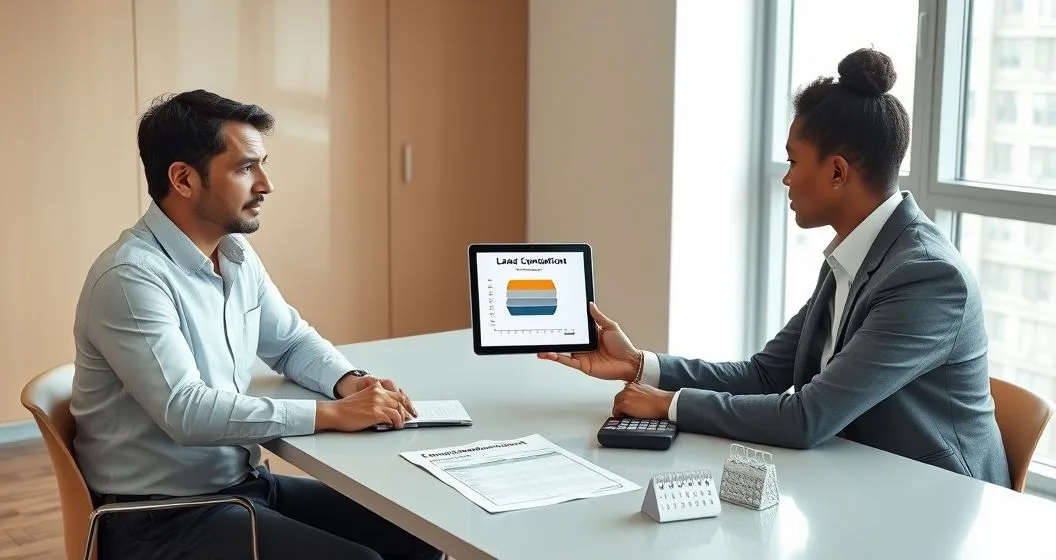Quick overview
Consolidating Parent PLUS Loans means combining existing federal Parent PLUS loans into a single Direct Consolidation Loan through the Department of Education. Borrowers may also choose private refinancing — a separate process with a private lender — which replaces federal loans with a private loan. Each path has trade-offs that change monthly payments, total interest costs, and access to federal benefits (for example, eligibility for Income-Contingent Repayment and Public Service Loan Forgiveness after consolidation). See the Department of Education for details: Parent PLUS Loans and Direct Consolidation Loans.
How consolidation works (step-by-step)
- Determine what you hold. Pull your loan details at the National Student Loan Data System (NSLDS) or at StudentAid.gov so you know balances, interest rates, and servicers.NSLDS
- Decide federal consolidation vs private refinancing. Federal consolidation rolls existing federal loans into a Direct Consolidation Loan without a credit check; private refinancing replaces federal loans with a private, credit-based loan.
- Apply for a Direct Consolidation Loan at StudentAid.gov or get rate quotes from private lenders.
- Choose repayment terms. A Direct Consolidation Loan offers repayment terms based on your consolidated balance (up to 30 years for large balances), which can lower monthly payments by extending the term but increase total interest paid. (U.S. Dept. of Education: Direct Consolidation Loans)
- Pick a repayment plan. After consolidation, you can enroll in repayment options available to Direct Loan borrowers; Parent PLUS loans consolidated into a Direct Consolidation Loan are generally eligible for Income-Contingent Repayment (ICR). For plan specifics, consult StudentAid.gov.
Key consequences to weigh
- Payment simplification: One servicer, one payment. That reduces administrative burden and missed payments.
- Extended term = higher interest cost: Lower monthly payments can come at the price of years (and therefore more interest) added to your repayment timeline.
- Federal benefits: Consolidation preserves federal loan status and, in many cases, enables access to ICR and potential eligibility for Public Service Loan Forgiveness if you meet all PSLF rules after consolidation. Keep records — consolidation can change which payments count toward forgiveness. See our guide on how consolidation can affect forgiveness: How Student Loan Consolidation Can Affect Future Forgiveness Eligibility.
- Loss of borrower protections only if you refinance privately: Private refinancing removes federal benefits (IDR plans, deferment, forbearance, PSLF eligibility).
Who is eligible
- Parent PLUS borrowers who hold federal Parent PLUS loans (Direct or FFEL that were consolidated into Direct Loans) may apply for a Direct Consolidation Loan.Direct Consolidation Loans — StudentAid.gov
- Private refinancing eligibility depends on credit score, income, and the private lender’s underwriting.
- You cannot transfer a Parent PLUS loan to your child. Federal loans belong to the original borrower unless refinanced privately and the private lender agrees to put the loan in someone else’s name (rare and requires creditworthy co-signer).
Practical examples (typical trade-offs)
- Lower monthly payment: A parent with $50,000 in Parent PLUS debt may reduce a $750 monthly payment to $450 by extending repayment. That helps cash flow but can add several years and thousands in interest — we’ve seen this add 3–7 extra years on average in practice.
- Forgiveness planning: A parent who consolidates and enrolls in ICR while working in qualifying public service can make progress toward PSLF; however, paperwork and timing matter — consolidate early enough so qualifying payments count and document employment and payments carefully.
Professional tips
- Run the math: Use a loan amortization or student loan calculator to compare monthly payment vs total interest over different terms before consolidating.
- Protect forgiveness: If you’re pursuing PSLF, consult the PSLF help tool and confirm which payments count before and after consolidation. Our related article on consolidation mechanics explains this in detail: How Parent PLUS Loan Consolidation Works.
- Consider refinancing only if you understand the loss of federal benefits and you have a stable income and strong credit. The CFPB explains risks of private refinancing: https://www.consumerfinance.gov/ask-cfpb/can-i-refinance-my-student-loans-with-a-private-lender-en-1937/.
Common mistakes to avoid
- Assuming consolidation always saves money. Lower monthly payments often mean paying more interest overall.
- Consolidating without checking forgiveness timelines. Consolidation can reset certain counts used for forgiveness programs.
- Transferring loans to your child — not allowed under federal programs.
Quick FAQ
- Can I consolidate Parent PLUS into my child’s loans? No — federal rules don’t allow transferring federal Parent PLUS debt to the student. Private refinancing is the only pathway to move legal responsibility, and it depends on lender approval.
- Will consolidation hurt my credit? A Direct Consolidation Loan itself doesn’t require a credit check, and effects on credit are usually minimal; private refinancing uses a credit check and can affect scores.
Sources & further reading
- U.S. Department of Education — Parent PLUS Loans: https://studentaid.gov/repayment/plans/parent-plus
- U.S. Department of Education — Direct Consolidation Loans: https://studentaid.gov/repayment/plans/consolidation
- NSLDS FAP: https://nsldsfap.ed.gov/
- Consumer Financial Protection Bureau — Private refinancing risks: https://www.consumerfinance.gov/ask-cfpb/can-i-refinance-my-student-loans-with-a-private-lender-en-1937/
Professional disclaimer: This article is educational and not personalized financial or legal advice. For guidance tailored to your situation, consult a certified financial planner, student loan counselor, or the Federal Student Aid office.



